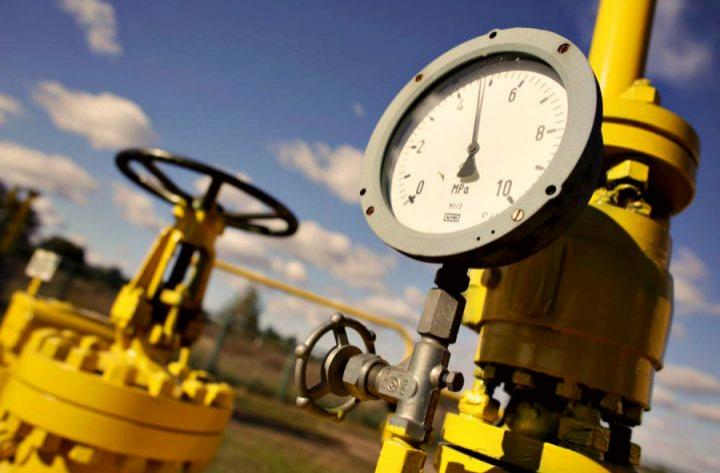
RUSSIAN GAS CORRIDOR

NGW - Russian views on energy development in the Caspian Sea and the European Union (EU)-backed Southern Gas Corridor are intertwined and provide a window into how the West can influence Russian behavior toward practices in the energy sector that are more competitive and less monopolistic. Beginning in the early 1990s, the startup of major offshore oil and gas projects involving leading international oil companies in the Caspian Sea helped compel Moscow to accept the division of the Caspian Sea into national sectors for resource development. The more contentious issue of the trans-Caspian pipeline would not be addressed for years.
Similarly, progress toward establishing the EU-backed Southern Gas Corridor has helped lead Moscow to focus more on its own export projects and less on efforts to block or co-opt the EU-backed project. In both cases, the establishment of firm projects with major infrastructure and international political, financial, legal, and technical support resulted in "facts on the ground" that Moscow grew to respect and accept. By providing non-Russian countries with real alternatives to produce and transport energy, these projects also helped influence Russian behavior more positively.
Although Russian views on Caspian Sea energy development and the Southern Gas Corridor bear similarities, Moscow's actions have moved in opposite directions. Russia has been able to stifle further independent actions in the Caspian Sea, such as trans-Caspian pipelines, by widely applying the agreed-upon principle that major decisions require the consent of all five littoral countries, and has built up a naval capability that can enforce its policies. Combined with past agreements that the Caspian Sea is for the most part open to shipping by all five littoral states, Russia's military dominance lends aspects of a frozen conflict to the South Caspian Sea.
On the other hand, the playing field for the Southern Gas Corridor has become more favorable, at least as long as it does not require a trans-Caspian pipeline. This project is designed to combine an expansion of the existing South Caucasus Pipeline through Azerbaijan and Georgia with the new Trans Anatolian Pipeline and Trans Adriatic Pipeline to establish a pipeline corridor that will deliver natural gas from Azerbaijan's Shah Deniz field in the Caspian Sea to Turkey beginning in 2019 and to Southeast Europe beginning in 2020.
The project is also a core initiative to help diversify EU gas supplies and enhance energy security by easing dependence on Russian gas imports.
For Russia, however, the view is different. One of the highest priorities in Russia's gas export and marketing strategy is establishing its own southern corridor for gas exports to Europe, in competition with the EU-backed project. Key indicators of Russia's intent are revealed in the progress of onshore infrastructure in Russia, proposed projects such as TurkStream to connect with Europe, numerous prior reactions to progress of the Azerbaijani-driven Southern Gas Corridor, Russian policies toward Caspian Sea use, and Moscow's tactics to prevent anyone from laying an east-west gas pipeline across the Caspian Sea. Russia is also driven by an excess of gas production capacity that it seeks to sell to the European market. Gazprom, for example, is eyeing a planned capacity expansion in the Trans Adriatic Pipeline or another pipeline linking Greece with Italy to increase exports to Southern Europe.
Ample evidence and a multitude of factors underscore that Russia's interest in establishing its own southern gas corridor to Europe is an important and enduring objective. Russia's vision for its southern gas corridor has varied over time and now consists of two new pipelines onshore in Russia that feed gas from fields in the north southward to Russia's Black Sea coast: a western pipeline starting at Russia's border with Ukraine and a longer, eastern pipeline running from West Siberia to the same point on the Black Sea. From there, the TurkStream pipeline will run under the Black Sea to Turkey's Black Sea coast and onshore to Turkey's western border with Greece. From this point, existing or newly built pipelines will deliver gas to customers in Southeast Europe. Russian President Vladimir Putin orchestrates the efforts to fulfill this vision with the full control and assistance of the Russian government, industry, and state gas export company Gazprom.
The evolution of Russian plans and efforts to establish a southern corridor delivering Russian gas to southeastern Europe that rivals the Southern Gas Corridor from Azerbaijan suggests Moscow may be moving toward competitive rather than monopolistic practices. This strategy of competing with the EU-backed Southern Gas Corridor evolved after attempts extending from the early 1990s to block or co-opt the corridor failed.
-----
Earlier:




